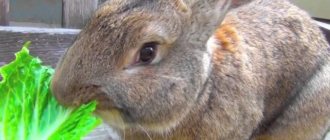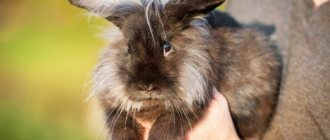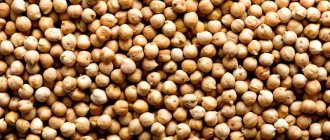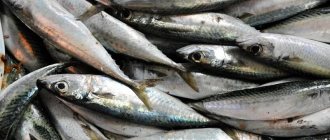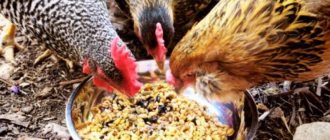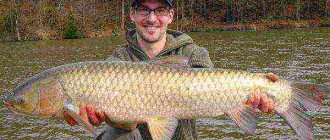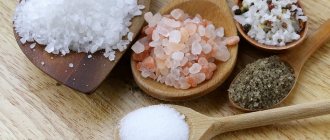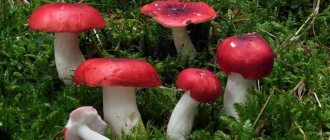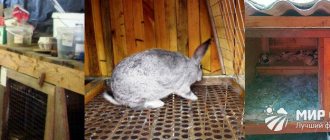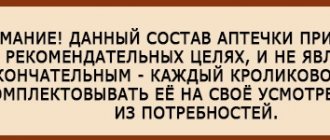Feeding
7688
1 comment
Mustard is widely used as an oilseed crop. This herbaceous plant belongs to the cruciferous family. A good honey plant. The plant, in the early stages of the growing season, is recommended as animal feed (grass, cake, silage), sometimes for rabbits. At later stages they are used in cooking, sometimes in other industries. Mustard is sown as an intermediate crop in crop rotation as green manure (green manure).
Photo. Mustard, in the flowering and ripening phase, is not suitable for rabbit feed
Cereal green feed
Cereal crops that are usually sown for green fodder include the sorghum plant, which is especially nutritious for rabbits. Sweet sorghum is similar in composition to regular sweet corn, but has a higher sugar content. Rabbits should be fed sorghum during the panicle period because this is when it contains more nutrients.
Two types of feed are obtained from Jerusalem artichoke - tubers and nutritious green mass.
It is recommended to chop these products before feeding.
Mustard cake
Mustard cake is well suited for feeding cattle; it goes well with other feed components, but it is used with caution for animals during pregnancy and during the period of feeding milk, as well as for young animals. Mustard cake comprises no more than 15% of the diet. Unfortunately, mustard cake is not suitable for rabbits, since the cake is obtained from seeds that contain a substance dangerous to rabbits.
Read also: Houseplants that attract money
Compound feed
- cake (seed cake for lactating individuals, therefore not for the rest of the livestock);
- grain (wheat, oats, rye);
- hay or straw;
- salt;
- vitamins and microelements.
Important: when choosing food, look at the marks on the category of animals. For example, feed for young animals is made more fortified (in some areas animals are given additional iodine).
It is no secret that manufacturers do not always conscientiously control the quality of feed components, so experienced breeders try to produce such food on their own. To do this, it is enough to prepare a special container, a mixer for construction mixtures and a granulator, and, of course, select the necessary components for the feed itself.
Most often, well-known cereals are used to create it, from which porridge is cooked (sprouted wheat, oats, barley, etc.) and water. At the request of the farmer, the composition may include a treat or a plant with a pleasant smell (exclude pea and legume husks so as not to harm pets). To please the eared ones, you can add rowan, maple, and mulberry (their branches) to the food. Long-eared eats such a gift with pleasure.
Contraindicated for rabbits
If you do not want to destroy your livestock, then carefully study the list presented and exclude the following ingredients from your pets’ diet:
- Nutmegs (walnuts are allowed in small quantities).
- Peas, lupines and beans (their husks can damage the digestive tract).
- Sunflower seeds.
- Datura, sage, spurge, celandine are harmful plants.
- Products with a lot of sugars.
- Cow's and any other milk, like all dairy products, is not accepted by the body and can lead to the death of the animal.
- Rabbits should not eat tomato tops (the corned beef it contains is poison for long-eared animals).
- Willow, tansy, woodlice or lilac with dew residue or raindrops.
- Dried, fried vegetables and fruits (baked pears, plum jam, dried fruits, etc.).
- Red cabbage and stalk.
- The rabbit eats raspberries, strawberries, and bananas, but these are soft foods that can quickly spoil and cause gastrointestinal upset.
Rabbits are given crackers and bread with caution. The thing is that this is a perishable product that can harm the digestive system of long-eared animals (if the individual eats food directly from the floor or ground).
Now you have become acquainted with the lists of products that farmers give to their pets in order to support their fertility and not spend money on treating diseases caused by a lack of micro and macroelements. Plus, you received a list of prohibited herbs, roots and foods. Remember it or keep it at hand so as not to lose your pets, because nutrition is one of the factors influencing the qualitative and quantitative characteristics of hares.
Dangerous buttercups
First of all, avoid collecting these particular poisonous herbs for rabbits. Buttercups are easy to recognize; they are found almost everywhere. You definitely need to know this plant, be able to distinguish it from dozens of others. Its yellow flower has a five-leaf calyx and a five-petal corolla. They usually grow in low-lying and damp places and bloom from spring to autumn.
Be very responsible about what grass you feed your rabbits. When eating large quantities of buttercups, acute poisoning occurs. The animal stops eating, suffers from attacks of pain, and the gastrointestinal tract is most affected. However, death is not always the case, unless, of course, you feed the animal exclusively buttercups.
Wet grass
It is strictly forbidden to collect plants for feeding after rain, or early in the morning when drops of dew remain on it. By giving wet greens, you expose the animal to the development of gastrointestinal diseases. In addition, the likelihood that the rabbit will eat everything in one go is low. And raw grass begins to ferment faster and rots, and an unpleasant odor appears. Subsequently, you will need to clean your pet's cage more often.
We invite you to familiarize yourself with procedures for beauty and health in the bathhouse
Silage - an alternative to fresh grass
These are fresh herbs, chopped and canned. It is in the silage that all the beneficial substances are preserved; the only thing that is lost is sugar. It is due to this that lactic acid fermentation occurs. However, special conditions must be used to prepare silage. A sealed container is required, which will be very tightly compacted with grass.
If these conditions are not met, putrefactive bacteria and mold fungi can settle in the grass. Such proximity can be costly for your animals. For silage, you can use special facing pits, trenches, barrels, or you can place bags with plastic inserts directly on the balcony.
What is the best rabbit grass for making silage? Any edible grass is suitable as the main filler, but for the reaction to proceed successfully, it is necessary to add stalks of corn and Jerusalem artichoke, sunflower and carrot tops, and cabbage leaves. After about 4 weeks, you receive ready-made food, which rabbits love.
Features of feeding rabbits
As you already understand, it is important to make food healthy and fresh, using nutrients, namely:
- Vitamin A is needed to maintain vision and reproductive function. If you notice a cessation of growth and disruption in the functioning of the nervous system, it is advisable to increase the concentration of the element in question.
- Vitamin E helps strengthen and grow muscles in hares. If it is not in food, then problems with the genitourinary system and liver are possible.
- Vitamin D reduces susceptibility to rickets and other musculoskeletal problems.
- Biotin helps strengthen the protective functions of the skin.
- Vitamin PP helps prevent digestive problems.
In addition to all this, the feed should contain salt (give up to a gram to baby rabbits and up to one and a half to adults). Many farmers use lick salt (a special mineral complex that is sold in veterinary clinics). Which method should I choose? It's up to you to decide.
Feeding of livestock must be precise (at a certain time). This helps improve digestion, because, like in humans, the glands begin to produce secretions at a certain time. This prevents food from remaining in the gastrointestinal tract for longer. There is no need to remind you of the negative impact of fecal retention in the body.
However, you should not overfeed rabbits. It is not difficult to guess that this can lead to obesity, the development of various diseases and even the death of the animal.
The diet of pregnant females should be more fortified; therefore, it is better to transplant such individuals into separate enclosures. After the offspring appear, it is advisable to add rhubarb and dill to the food.
Can rabbits be given roughage? Yes, but not all of them. Bark (birch, maple, cherry, acacia) is allowed, because in the wild, especially in the cold season, trees become a salvation for eared ones. Not allowed: cherry, plum, peach and black cherry species.
Don’t forget to include in your diet, in addition to grain (rye, barley, millet) and other delicacies (plantain, fireweed, sweet clover, clover, cucumbers, carrots, onions, acorns and other plants).
Oddly enough, but the answer to the question: “Is it possible to give rabbits a shepherd’s purse?” - positive. It is worth noting that long-eared animals love this product, although some are distracted by its pungent smell. The same can be said about onions (it’s impossible not to eat onions) - the livestock eats them in order to strengthen the immune system.
Winter rapeseed is given to rabbits only until the seeds appear. Later, this product becomes dangerous to the furry's health.
Can rabbits have eggs? There is a lot of protein in an egg, so there is simply no point in denying your pet such a useful component. Plus the yolk is a god of amino acids and fats. Therefore, feel free to give your rabbits this product, but not more than a couple of times a week.
It is important to always keep a full drinking bowl with clean water (it’s better to make a small one), and put food only in a clean feeder. That's probably all the basic nutrition advice. Although… . Please note the list of prohibited foods for rabbits.
How to feed greens correctly?
In early spring, when rabbits begin to switch to summer food, greens begin to be added gradually. For the first time, nettle feeding is done at the rate of 50 grams of green mass per rabbit. Moreover, finely chopped nettle is brewed and crushed potatoes or bran are added to it. During summer maintenance, the following rules must be followed:
observe the norms for feeding green mass; prepare the grass specially: requirements for places where the mass is harvested.
Norms for feeding green mass
The norm of grass for rabbits is increased every day and after two weeks an adult nursing queen receives up to one and a half kilograms, females up to a kilogram, and young animals 600 grams of grass per day. This represents more than half of the daily consumption of all feed.
You need to know that hay should always be present in the feeders. It can be replaced by young tree shoots. Rough food is necessary for grinding down growing incisors. Feeding grass with mold or rot is unacceptable.
Grass requirement
Do not feed animals heated fresh grass or wet grass from rain or dew. With green feeding, it is correct to give the rabbits grass that has lost its tugor under the sun's rays. In this case, the grass for rabbits should be clean , washed if necessary. This grass has already lost some of its moisture and has a beneficial effect on digestion.
You cannot cut grass on the sides of roads. Even after washing, it has already taken on harmful substances and feeding the poisonous mass can lead to illness and death of the rabbits. If lethargy occurs in pets, one way to help them improve their well-being is to add chamomile or oak leaves to their food.
The mass used for green fodder should be prepared only from young grass. After flowering, all plants become coarser. Therefore, the farm owner should take care of the second half of summer , when the plants are already blooming or ripening. The best way would be to sow green manure on plots of land freed from early greenery. Plants such as phacelia, mustard, and vetch will quickly produce young green mass.
Features of nutrition in the wild
https://www.youtube.com/watch?v=OGChBpCbVfE
To correctly create a diet that is beneficial for rabbits, you need to pay attention to the composition of the food consumed or in the natural environment. Among these:
- bark;
- corn;
- grass;
- fruits, etc.
It is important to know that the digestive tract of hares is specific: the intestines are not able to independently move the digested mass, therefore, in order to live a full life, the long-eared one has to constantly chew. Consequently, if there is no food, gastrointestinal stasis may develop, causing bloating and even death.
Caution: poisonous plants
Feeding animals with wild herbs has certain risks because it is necessary to constantly ensure that the rabbits do not get poisonous plants in their food. This can easily happen with large volumes of workpieces.
Based on the nature of their effect on the body, the following poisonous plants are distinguished and should be avoided in the diet:
- the stimulating effect on the central nervous system is henbane, datura vulgare, ephedra, poisonous vekh, omega, buttercup, tauric wormwood, celandine, celandine and other herbs;
- a negative effect on the respiratory system and digestive tract can be obtained from ingestion of comfrey, steppe, wolf's bast, castor bean, cockle, milkweed, rannik, nightshade, mustard;
- the presence of crow's eye, adonis, lilies of the valley, jaundice, and foxglove in food has a directed effect on the cardiovascular system;
- lupine, crosswort, and goldenrod primarily affect liver function;
- a blow is struck to the processes of tissue respiration by bobchuk, flax, flat cake, when it enters food, due to the formation of hydrocyanic acid;
We suggest you watch Pruning grapes in autumn for beginners video
The most dangerous plants for rabbits, hemlock, hellebore, celandine, henbane, black and sweet nightshade, pink mustard, field poppy, buttercup, datura, wild rosemary, crow's eye, intoxicating chaff and many other plants cause deep poisoning when ingested and death.
When preparing green forages, especially large-scale ones, you should use special crops of grass or avoid forbs that may contain poisonous plants.
Reminder for proper feeding of rabbits
The basics of feeding rabbits include the following rules, which can be followed and are suitable for all breeds and ages of these animals, and can also be applied to any size of farm:
- Feeders should always be kept free of feces or dirt.
- Transitions from winter dry diets to green fortified feeds should occur gently and gradually from 30 to 50 grams for young animals and from 50 to 100 grams for adults at the beginning of the season and to the full norm within one to two weeks.
- If freshly cut grass turns out to be wet with dew or rain, then the grass must be dried in the sun or mixed with straw or hay.
- If rabbits have indigestion, the green mass in the menu is reduced, and branches and bark of aspen, oak, walnut, and alder are added instead.
- As a laxative for constipation, it is recommended to increase the proportion of nettles, cabbage, beets in the diet or add bran.
- Silage is fed within no more than four hours after removal to avoid souring of the mass.
- Beet tops have a strong laxative effect, which can be used in combination with chalk in a volume of about 300 grams.
- It is advisable to use potatoes in the menu for rabbits boiled.
- Bulk dry food must be moistened.
- Don't forget to drink while feeding. This is a very important point in catering. Fresh, clean water must be constantly in the drinkers and updated in a timely manner if the drinkers are filled manually. With automatic watering, this problem is solved more easily. The constant availability of water is especially important for pregnant females and in the summer with frequent renewal of fluid.
The effect of herbs on the body of rabbits
In the wild, rabbits eat plants frequently and in large quantities.
The habitats of these animals are:
- undergrowth;
- forest clearings;
- bushes near river banks.
When choosing greenery, preference is given to those plants that grow in their natural habitat. These can be clover, alfalfa, plantain, dandelion, sorrel, sow thistle, tansy, and reed. Greens are high in fiber, which is great for wearing down your teeth.
The digestive system is designed for constant active consumption and processing of plants.
Advantages
- The benefits of using herbs in a rabbit's diet are:
- varietal diversity, which ensures the supply of a large number of different biologically active substances to the diet;
- a large amount of plant foods (this is necessary for normal digestion);
- no costs for purchasing such food;
- proper grinding of the animal’s teeth;
- assistance in restoring normal intestinal microflora, enriching the diet with nutrients, therapeutic effects;
- guarantee of good health and immunity of the pet.
Did you know? There are over 10,000 species of herbs in the world, which is quite a lot. Scientists estimate that of the more than 1 million species of all plants, only about 350,000 have names.
Flaws
There are not many disadvantages to using herbs.
- This list includes the following:
- a rabbit can become infected with helminths if plants are collected in areas where farm and domestic animals live;
- The pet will be poisoned if poisonous plants enter the body.
Now you know exactly why you can’t collect grass near human habitats. The collection of plant materials is organized in places far from the constant presence of people, and certainly in the summer. It would also be correct to pour boiling water over the plants before eating (this destroys most of the parasites).
The risk of contamination with such raw materials is minimal. To avoid poisoning, do not collect unknown herbs for your pet.
We came to the conclusion that the basis of nutrition for these animals is grass. However, before determining what grass can be given to rabbits, let's talk about the characteristics of their body. These pets are extremely sensitive to care, and their fragile bodies instantly react to the slightest changes.
Proper nutrition means a lot. Only an optimal diet will ensure the health and good development of your pet. Their metabolism is so high that hunger is very harmful for a furry baby. However, here lies the main danger: food poisoning with such a metabolism is fatal, you simply do not have time to take action. Therefore, offer your pets only those plants in which you are completely confident.
The rest of the products must be fresh and clean, without signs of mold, rot, and always without dyes or chemical additives. Now let's talk about what kind of grass can be given to rabbits.
Nutrition of young animals
Young rabbits that receive complete and varied green food do not need additional calcium and vitamins in their diet. In summer, mixtures of pea and oat masses are used as green feed, which are fed before or during flowering. For stable feeding using green feed, it does not interfere with organizing a conveyor feed of feed. The sequence of use of green masses in nutrition depends on the maturation of various crops:
- The earliest green food is winter rye, which can be used from the appearance of sprouts in the spring. After the plant grows into a tube, the use of rye as food by rabbits sharply decreases. To diversify the taste of this crop, winter rye is mixed with vetch.
- Next on the rabbits' menu are young clover of the first cut and meadow grasses. Then spring crops are used, which include mixtures of vetch and oats, pea mixtures, and sunflower mass. If the appropriate sowing dates are maintained correctly, the listed crops can provide rabbits with green food in July and August.
- Green mass from sunflowers is excellently used on farms as green fodder for two weeks before flowering; rabbits really like it.
- Alfalfa is an excellent addition to the rabbit menu, rich in proteins, minerals and vitamins.
- For the development of young animals, calcium is necessary, which red clover is rich in, which is also valuable for its proteins and reduces the need for more concentrated feed. In the green conveyor belt, clover is used for rabbits immediately after winter rye. Feeding red clover is especially effective before flowering because during this period the clover masses have more protein.
- Another excellent food for rabbits is kale, in which the head does not set, but instead grows large, tender and juicy leaves. The high content of nutrients in kale is combined with a large amount of minerals, in particular phosphorus, iron, sulfur, and calcium. These substances contribute to the proper growth of high-quality fur in rabbits. When feeding this variety of cabbage, the average daily growth in rabbits corresponds to similar feeding with clover masses.
- In feeding rabbits, in addition to the above-mentioned seed crops, the tops of garden tubers, root vegetables and cabbage leaves are of great importance. In terms of nutritional value, carrot tops can be placed at the highest level, and for animals they are a favorite delicacy.
- The benefits of turnips, beets, rutabaga, and cabbage leaves consist of a large amount of water in the composition.
We suggest you familiarize yourself with Which zucchini can be stored in winter without refrigeration and how to prepare them
How to grow green food on your own plot
Autumn is coming, which means it’s already difficult to figure out what kind of grass to give the rabbits, since there is nothing left either at the summer cottage or in the field. Now the basis of nutrition will be grain and hay. We'll talk about dried herbs a little later, let's focus on grain crops. Concentrated feeds are the most nutritious and important when raising young animals.
The most important grain is oats. Rabbits and barley are excellent eaters. Legumes are an important element of nutrition; they can be sprouted, providing the eared creature with all the necessary microelements. In addition, you can feed them in their pure form, after soaking them in water for 3 hours. Compound feed consisting of different types of cereals has proven itself to be excellent.
Mineral supplements and specialized vitamin mixtures are also added to rabbit food. Regarding vitamins, you can consult the nearest veterinary pharmacy; this could be “Vitaminchik”, “Ushastik”, “Lolo” and many others. Bone meal, salt and chalk act as mineral supplements. Salt is added to the feed, and chalk and flour are sprinkled on the juicy greens.
Winter is coming, and with it the question of what grass to give to rabbits becomes increasingly acute. Photos in magazines often show us small green gardens in the window, which are grown especially for a pet. But this method is only good for feeding a decorative pet. If you have a farm, then you definitely need to make hay.
High-quality hay has a greenish color and a pleasant aroma. Its value depends on the composition of the herb, the time of its collection and storage conditions. The best grasses for hay are alfalfa, clover, and sainfoin. This bean hay contains twice as much protein as cereal hay. However, you can dilute it with cereals, such as oats.
Closer to spring, hay reserves usually come to an end; for this period it is necessary to prepare branch feed. To do this, at the beginning of summer, young branches are cut from various deciduous trees, tied into brooms and dried in a ventilated room. In terms of nutritional value, they are close to straw; they are a source of carotene and vitamins, cobalt and manganese.
You can harvest branches of birch and acacia, willow, cherry, elm and hornbeam, pear, oak, spruce, willow, and hazel. Rabbits are very fond of raspberry and linden, alder and rowan branches. Plants such as apricot, buckthorn, elderberry and bird cherry cannot be used. The branches of these trees contain toxic substances and can harm your pet.
When choosing herbs for rabbits, use the same principle as when picking mushrooms. If you don’t know what kind of plant it is and how it will affect furry pets, then either leave it in the field or dry it, it will be safe in the form of hay.
The following basic feeding rules are distinguished:
- the diet of ordinary and decorative rabbits should consist of hay, root vegetables, herbs and concentrates;
- It is impossible to feed rabbits only grass - this leads to diseases of the digestive tract and tooth deformation;
- greens should not exceed 40% of the diet, and its optimal amount is about 30%;
- hay and branches should always be freely available - the pet will not eat more of them than necessary;
- greens should be given during the day;
- it should be varied (you can’t give plants of the same type all the time, this impoverishes the diet).
Before giving the grass to your pets, it must be processed: washed and dried.
Important! In agricultural practice, plant safety is determined by cattle grazing. Cows don't eat anything that contains poison. If you saw this plant intact in a grazing area, it means it should not be given to rabbits.
Adults
The share of green food in the total diet should be no more than 30% - this is one of the feeding rules. An excess of greens causes diarrhea due to the abundance of plant proteins. Proteins in large volumes are not absorbed by the animal’s body. When specifying what to feed an adult rabbit, it should be noted that on average the diet consists of:
- hay – 10-11%;
- root crops – 9-10%;
- greens – 40%;
- concentrates – 35-40%.
Animals need to be fed 3 times a day. Branches and hay should be available at all times, and green food and concentrates not eaten by the pet should be removed so as not to create an environment for the development of various pathogenic microorganisms, fungi and mold.
Baby rabbits
To make your baby rabbit’s diet as healthy as possible, greens can be grown rather than collected. A group of small boxes is suitable for this. What to feed small rabbits?
Suitable for them:
- lettuce leaves;
- lettuce;
- carrot;
- dandelions.
Dandelions, plantain, and clover are suitable for rabbits aged 1-2 months. The amount of greens in a baby rabbit’s diet is no more than 10 g.
Any useful herbs are suitable for young animals. Their volume in the summer diet is about 200 g per day (the composition includes both hay and green mass). When it's cold, the share of hay increases to 300 g.
Did you know? Among all types of pets, rabbits are the third most popular.
You can grow salads and grains on the windowsill for rabbits - barley, wheat, oats, buckwheat. They are rich in vitamins B-complex, E and K, phosphorus, magnesium, potassium, protein. They contain a lot of fiber, which is beneficial for the animal. Such food is not only environmentally friendly, but also healthy.
Any container is suitable for growing grass. It could even be an empty tin can or flower pot. Greens do not need a deep layer of soil, so it is better to use plastic boxes. Plants are sometimes grown in sawdust or cat litter.
The seeds are sown scattered and the substrate is sprayed with a spray bottle. After the seeds are placed in the “soil” and watered, cover the container with film to create a greenhouse effect. Everything will germinate in 5 days.
We invite you to familiarize yourself with Hypogalactia in cows
Rabbit breeders recommend using grain seeds for planting, which are purchased to feed the pet. They germinate better and do not contain herbicides that are used to treat grains in the agricultural sector.
For planting in the ground on personal plots, both grains and herbs of agricultural importance are used - mustard, clover, alfalfa. You need to sow shallowly in moist soil. After sowing, monitor the condition of the soil and water when dry.
To organize crop rotation, you can plant greens in batches every few days.
The rabbit's digestion is designed in such a way that it must constantly chew, so hay and branches must be in the feeder at all times.
Among the main recommendations for feeding grass are:
- any plant material must be washed from dust and dried in a dry place;
- drying time – 3-4 hours;
- Dry in a thin layer on a clean surface and turn over periodically.
When choosing grass, use simple rules: if you don’t know this plant, you don’t need to give it to your pet. There are so many useful and neutral plants that you will definitely choose a high-quality diet for him.
Not all herbs are suitable for feeding
When breeding rabbits, you should study the peculiarities of their feeding. Green food makes up a significant part of the proper nutrition of furry animals. This food not only frees breeders from unnecessary expenses, but also brings great benefits to their pets.
Before you start feeding herbs, you need to figure out which greens can and should be fed to rabbits, and which ones to remove from the diet.
A balanced diet will help raise healthy offspring. The basis of proper nutrition is green herbs. Dandelion, plantain, burdock, and alfalfa are considered favorable plants.
Nettle must be pre-treated and given in small quantities. Herbs can be mixed. Rough and succulent food must be present in the diet.
Fresh nutritious greens need to be washed to remove dirt and dust. Before feeding, the green mass should be slightly dried. The grass should only be fresh.
Rotten, old plants should not be given to animals. If there is no confidence in the safety of green mass, then you should not risk the health of your pets.
Nutrition in winter and off-season
In winter and in the off-season, juicy, rough, concentrated combined feeds, which are rich in vitamins, proteins, and microelements, are used as feed.
- roughage includes: hay of leguminous plants - vetch, alfalfa, sweet clover, clover; hay of various grasses, which is collected before it is outgrown - forest, meadow, upland, steppe;
- succulent foods include: root crops of turnips, carrots, potatoes, turnips, beets, Jerusalem artichoke; heterogeneous and homogeneous silage; melons and garden crops - pumpkin and cabbage;
- Concentrated feeds include: grain legumes and cereals from corn, oats, barley, soybeans, peas, millet, vetch, lentils; various brans; meals and cakes from hemp, flax, sunflower, rapeseed, camelina, corn seeds; combined feed.
Various feed products are used as complementary foods - malt sprouts, grain waste, wild rowan fruits, acorns, chestnuts, animal feed - meat and bone, meat, bone, fish meal, skim milk, sour milk, whole milk, whey.
For normal nutrition, mineral supplements such as bone meal, table salt, and chalk are used. Protein from young plants, which is a complete protein, plays an important role in nutrition. Actual protein intake differs depending on age and gender:
- Normal growth from 4 -12 weeks: 15% protein
- Breastfeeding and Pregnancy: 18% protein
During feeding, it is necessary to prepare root vegetables - they must be thoroughly cleaned of dirt and rot, chopped raw. If the root vegetables are frozen or sprouted, for example, potatoes, then it is better to boil them.
Signs of food poisoning and what to do?
The main sign of poisoning is the rabbit's refusal to eat.
Behavior also changes: the animal is too calm or, conversely, restless. You can tell about a problem by the appearance of the fur (if it becomes disheveled and loses its shine). In case of poisoning, the body temperature rises, diarrhea and vomiting, and convulsions may occur.
Be sure to read:
How long does a rabbit grow before slaughter? 2 ways to fatten meat breeds for rapid growth and weight gain
As soon as symptoms appear, the sick animal must be isolated from its relatives and treatment must begin. First you need to do a gastric lavage and give an antidote. Fresh milk would be an excellent remedy. You need to give 3-4 tbsp. l. 3 times a day.
Hay
Is it possible to give hay to rabbits? Of course, this is one of the components of a rich diet. What grass is best to use for harvesting? Here is a suggested list:
- clover;
- alfalfa;
- whine;
- lungwort;
- you can leave mouse peas and chamomile, etc.
Hay is an essential source of fiber for rabbits and must be properly prepared. First, you will have to mow the grass in a way convenient for you, then dry it in the sun, collect it in piles and put it under a canopy. If there is nowhere to store it, then a film is placed on the top of the stack that can protect the workpiece from excess moisture and snow.
How much hay does one rabbit need per day and for the winter?
To provide your pets with adequate nutrition for the winter, hay must be prepared from meadow and steppe herbs. It is necessary to mow the grass before flowering, before the stems become coarse.
Among plants, preference should be given to clover, dandelion, burdock, and shepherd's purse. For storage, hay must be dried. If during storage the food has lost its original appearance or wet spots have appeared, then it must be removed from feeding.
Pets should receive hay regularly. In cages, hay is always available in the open. A rabbit should eat dry food equivalent to its body size per day.
For the winter, they prepare from 40 to 100 kg of hay per pet. When harvesting, do not forget about the appearance of offspring, so you need to dry the hay with a reserve.
